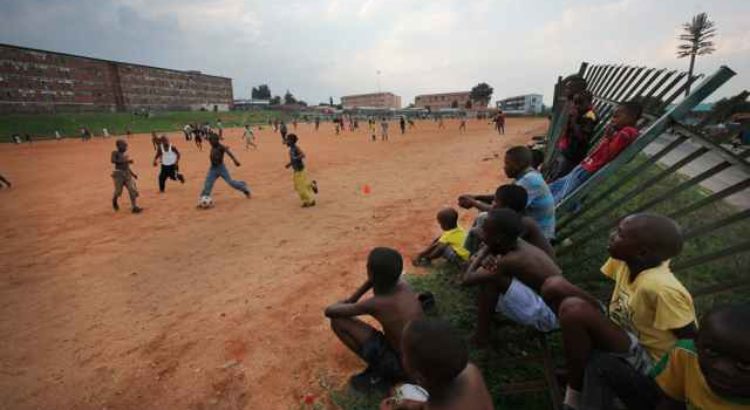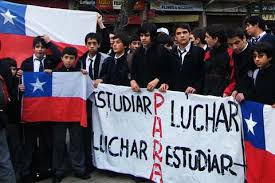By Inside_Education/23-05-2018
South Africa’s history of segregation has left its footprints in many places. Take the case of semi-rural Franschoek in the country’s Western Cape province. In one part of the town, which draws tourists from around the world to enjoy award winning wine and food, is a private school that boasts excellent sports facilities.
There’s an indoor sports gymnasium where tennis, hockey, netball and soccer are played. There are two swimming pools – one for beginners who are just learning and one for water polo and senior swimming. Elsewhere on the school campus are six tennis courts and two cricket ovals with turf wickets. New sports fields, including two more cricket ovals, are being developed.
A few kilometres up the road is a public school that caters for pupils from an informal settlement. It has no sporting facilities.
This scenario is repeated across South Africa; a modern echo of the country’s history of racial segregation. Patterns of neglect, established in the 19th century when formal schooling was introduced in South Africa, persist.
An understanding of and reckoning with segregation history is important in coming to grips with the current state of poor school sport provision in black and coloured communities. South Africa will not address the great inequalities that still exist in school sport if it keeps ignoring history.
The mission years
Formal schooling was introduced in South Africa during the 19th century. Black pupils were largely educated at mission schools run by a wide range of denominations.
Most mission schools had no decent sporting facilities. They practiced and played sport separately from white organisations and schools. For instance, when the Western Province Rugby Football Union created the Junior Challenge Shield League in 1898, the competition was open only to learners of “European extraction” – that is, white.
This exclusion stretched across sporting disciplines. When the Good Hope Education Department organised the Physical Training Coronation Competition in 1902 at the Green Point Track, a separate division was organised for “coloured” or mission schools. The winner of the 1902 Coronation competition in the Mission School division was the St Cyprian’s School in Ndabeni Location.
This location, as living areas for black Africans were called, was established for families who were forcibly removed from District Six in Cape Town in 1901. The school was a zinc structure with no playing facilities.
In 1928 mission schools set up the Central School Sport Union. Its first athletic meeting was held at the Mowbray sports ground, the home ground of the City and Suburban Rugby Union. Newspapers from the time, which I’ve studied, reported that the grass was knee high. This situation existed by design: the South African Institute of Race Relations reported regularly on how much more money was spent to provide sporting facilities for white schools.
At a national level, the first inter-varsity athletic meeting was held in 1921 at the Wanderers Club in Johannesburg between the Transvaal University College (later Pretoria University), Grey University College (later Free State University) and the Johannesburg University College. These were all white colleges in the northern parts of the country. When institutions from southern regions were included the following year, black colleges were excluded.
These black colleges established the Ciskei Bantu Amateur Athletic Association in the Eastern Cape under the auspices of the South African Bantu Amateur Athletic Association.
Apartheid school sport
Then came formal apartheid, and the situation worsened.
During the 1950s and the decades that followed, the education department wouldn’t provide black and coloured schools with decent facilities like rugby fields or athletics tracks. This was because, according to the influx control laws, Africans could not obtain permanent residence in cities. Why, apartheid authorities reasoned, spend money on people who legally weren’t allowed in certain areas?
The colleges playing in the Ciskei Bantu Amateur Athletic Association, meanwhile, received no support for sporting facilities while the nearby prestigious St Andrew’s College and Rhodes University benefited from excellent fields and tracks.
Apartheid legislation closed the Mowbray sports ground, leaving the Central School Sports Union without a place to play. A whites only school was built on the facility. The sporting past of this lost facility is largely unknown; no commemoration plaque, for instance, exists to mark its history. Another example of history forgotten and heritage ignored.
Few shifts after democracy
With the arrival of democracy in 1994 some organisations dedicated to championing non-racial school sport, like the Western Province Senior Schools’ Sports Union, closed their doors. But while desegregation in school sports was introduced in theory, the reality was rather different.
Many historically white schools appear reluctant to compete with township schools in mass competitions. They continue to hold closed inter-school derbies and athletic meetings catering for other similarly resourced schools on their well maintained sport fields.
But ironically, former whites-only schools have realised the potential of black and coloured pupils to shine on the sports field. A cursory overview of the senior national rugby and cricket teams in 2018 shows that more than 90% of black and coloured players attended historically white schools. Such players were often “poached” from township schools with scholarships and bursaries.
This “poaching” has benefited individual players but it’s happened at the expense of township schools.
Addressing history
The colonial and apartheid education project still echoes in South Africa’s post-1994 school system. For real change to start happening, it’s important for administrators, school authorities, parents and pupils to look to and understand the imbalances of history – and start working to set them right.
Read original article here








 Users Today : 23
Users Today : 23 Total Users : 35403361
Total Users : 35403361 Views Today : 26
Views Today : 26 Total views : 3332652
Total views : 3332652